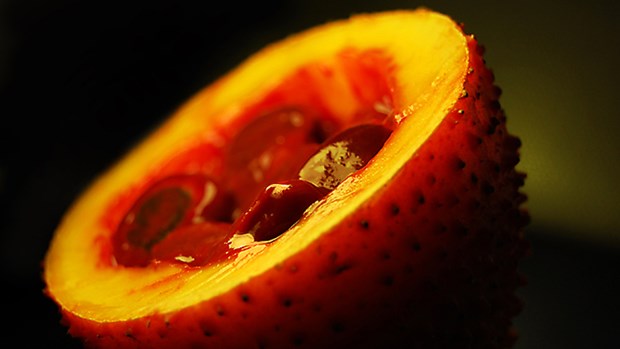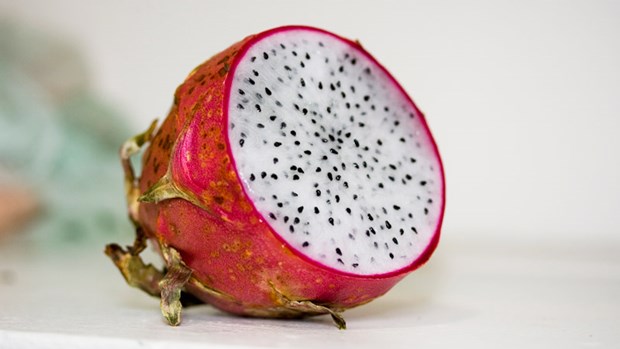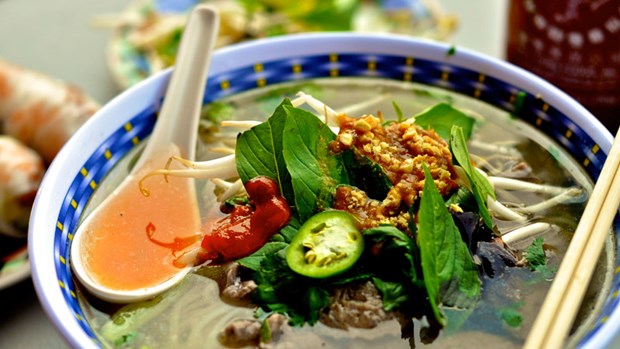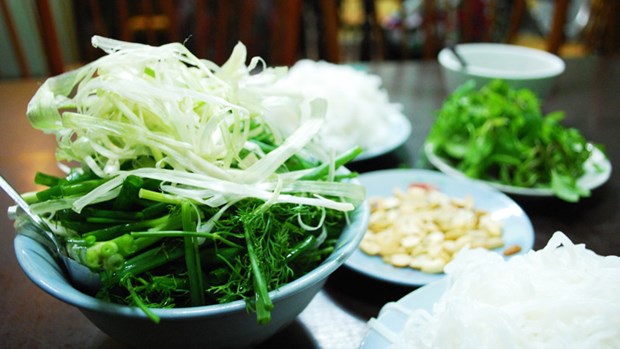To
make sure that this was true, we spoke to Antoine Yvon, the head nutritionist
at CMI hospital in Ho Chi Minh City. You will finally know if all those banh mi
sandwiches are good for you, if you should drink the broth of your pho or not,
and the name of Vietnam’s only super fruit. The interview was translated from
French.
The health benefit of
a Vietnamese food diet
City Pass Guide: What is your general professional opinion about
Vietnamese food? Is it as healthy as people think it is?
Antoine: Vietnamese food is one of the healthiest
and balanced in the world. As a professional, I have seen that dishes and
ingredients used in Vietnamese cuisine can cover all the dietary needs on
protein, lipids, carbohydrates, vitamins and minerals because there is a great
natural diversity of agricultural products. It is this diversity and variety
that are the foundations of a healthy and balanced lifestyle.
The
way to eat food is also a very important factor that can influence the
nutritional value of food. Eating with chopsticks, using multiple dishes, and
sharing with people allows you to eat more slowly, to chew the food longer and
in the end causes a better digestion and assimilation of nutrients, without
overloading the digestive system.
Therefore,
the social and cultural aspect of eating Vietnamese food is a reason why eating
Vietnamese food is healthy.
The
reputation of Vietnamese food as healthy is correct as long as we eat traditional
dishes.
The
economic growth has considerably changed the way Vietnamese people eat by
bringing some Western habits and products. Modern Vietnamese eating habits are
straying away from the ideals described above, with more and more processed
products, enriched with artificial nutrients, artificial flavorings, rich “bad
fat” (trans fat and saturated fat are not essential) and simple carbohydrates
added to food, particularly all the dairy products which were unknown a few
decades ago (pasteurized cheese, sweetened condensed milk, flavored yogurts)
and all junk food (cakes, pastries, ice creams, sodas, fast food).
Even
though Vietnam is one of the countries with the lowest rate of obesity in the
world if we look at the overall population, some categories have results that
are not so positive: children and teenagers. The number of Vietnamese children
under five years old with weight problems has doubled in four years in Vietnam,
while at the same time it has decreased by 25% in the U.S.
What
Vietnamese food should be avoided? What are the healthiest options?
As
long as you eat traditional food, there is not food that you should avoid. You
must just make sure to avoid processed food as much as possible. It is also
best to avoid deep fried food and those grilled on a barbecue.
The
healthiest dishes are the soups (among which are pho), spring rolls, fruit and
vegetable salads, claypot dishes, rice dishes with meat or fish cooked in sauce
and fresh fruit juices.
What
are the typical health problems developed by Vietnamese people from their
eating habits?
The
change of habits mentioned above are causing an increase in the number of
cardiovascular diseases and metabolic disorders (infarctus, diabetes, metabolic
syndrome), obesity, cancers, particularly among children. Also, the increased
consumption of alcohol among men increases the number of liver and digestive
system cancers.
The healthiest fruits
in Vietnam
Is
there any Vietnamese superfood (a dish or a product with superior health
benefits)?
Though
not often eaten apart from during traditional festivities, the little know
“gac” fruit (or red melon), often nicknamed the “fruit of paradise” is the
fruit with the highest concentration of carotenoids in the world (a precursor
to Vitamin A). The gac contains 75 times more lycopene (an antioxidant) than
tomatoes. It can be considered a super fruit. Its taste is close from red melon
and carrots. It is more and more popular in the U.S. or Europe as an eating
supplement.

Gac is one of the healthiest fruits you can get in Vietnam. Image by Egor Kataev
What
are the most recommended local fruits and vegetables (dragonfruit, sapoche,
kumquat, etc)? You might know the expression, “an apple a day keeps the doctor
away” – what is the Southeast Asian equivalent of our trusted apple?
Even
though there are a lot of vegetables in traditional vietnamese food, the
average daily consumption is twice less than the recommendations from the World
Health Organization. 40% of cancers in Vietnam are linked to food consumption
(principally because of processed food, bad eating habits and bad eating
hygiene). It is certain that if more fruits and vegetables were eaten, the
situation could improve. Unfortunately, people are buying less fresh fruits and
vegetables, because they are suspicious about the hygiene and sanitary
conditions of them, and more canned products which are poorer in essential
nutrients.
More
important than the qualities of certain food, the most important is to eat
enough and regularly the greatest variety of fruits and vegetables.
If
we had to categorize them according to how rich they are in nutriments, we could
differentiate:
-
The richest ones in vitamins and
antioxidants (lychee and rambutan, chinese celery, ceylon spinach, guava,
papaya, kiwi, dragon fruit)
-
The ones with the most sugar (to be
careful with): lotus seeds, sweet potato, taro, banana, grapes, cherries,
mango)
-
The ones that are hydrating and less
sweet: berries, watermelon, melons, citruses (oranges, pomelo, lemon,
kumquat), apple, star fruit, gac fruit
Vietnamese
are among the largest consumers of durian fruit, known for its smell more than
for its qualities. It is called the king fruit here. In Indonesia, it is
considered an aphrodisiac. In Vietnam, it causes several deaths every year (the
mix of alcohol and durian is toxic for the liver and excessive consumption can
cause hypertension).
The
link between what people eat and how healthy they are is not obvious yet for
many Vietnamese, which causes a lack of interest for nutrition.

Dragon fruit is a tasty fruit packed full with vitamins and antioxidants!
Eating street food in
Vietnam: Sauces, pho, banh mi, herbs…
Should
we avoid Vietnamese sauces?
Sauces
are a very important part of the Vietnamese food experience. A meal without sauces
is like a meal without bread in France. You should not ban them.
Even
the sauces that are very sweet or salty should not be banned totally. At
reasonable doses, they represent only a fraction of the food intake compared to
carbs like rice. Keep it simple and traditional!
Is
pho healthy? Should the broth be drunk or left aside?
The
pho, the most famous Vietnamese food, is certainly one of the most balanced
dishes I know. Eaten all day long, it contains carbs, good proteins (beef or
chicken), few fat, a lot of water, a lot of dietary fibers, vitamins, minerals
(herbs and vegetables) and antioxidants (spices, chili, lemon). Who does not
feel full after eating a Pho?
If
you want to balance it even more, you can add a raw vegetable salad with
vegetable oil for appetizers or a fruit salad for dessert. Add a few dry fruit
too like nutmeg, peanuts, almonds.
The
broth should be drunk because a lot of water-soluble vitamins and minerals are
dissolved in the water during cooking. They are intact inside the broth (except
for the B1 vitamin, B3 and C that are partially altered), a gold mine full of
nutritive ingredients. The broth is as important as other ingredients of the
pho. It is a source of water and thus hydrates and cools the body (just like
nomads in the desert drink hot tea: a hot brew cools and hydrates the body
better than cold water). The body reacts to hot liquids with several cooling
processes (perspiration, transpiration, more efficient digestion, etc.).

Pho is a healthy and balanced Vietnamese dish. Image by James
Is
banh mi healthy?
The
banh mi is a sandwich that can be made in a multitude of ways depending on
where you eat it.
More
often, it contains a source of proteins (pork, chicken, ham), some vegetables
(lettuce, carrots, green bean sprouts), bread and sometimes industrial soft
cheese (The Laughing Cow brand).
The
white bread used is not as filling as rice and noodles and is poor in good fat
and fibers.
You
should be careful in making sure the ingredients added are not processed food
(pate, sausages, cheese) and that not too much sauce is added (particularly if
it sugars, or fat).
You
could replace the processed cheese with a yogurt (made of milk! It is not bad
if the portion is reasonable and it can complement well a banh mi,
nutritionally speaking).
Contrary
to pho, the banh mi does not hydrate the body well. You can accompany it with a
fresh drink while you eat such as a lime juice, coconut water or sugar cane
juice.
Do
the herbs added to the recipes have nutritional or health benefits (cilantro,
mint, cinnamon herb, etc.)?
Aromatic
herbs contain a lot of antioxidants and vitamins, whatever they are, often with
a higher concentration than that found in most fruits and vegetables. It is
because they smell good that they are so interesting because the aromatic
molecules, the ones responsibles for the good smell, are also directly
responsible for the medicinal properties of those herbs.
They
have diuretic, anti-inflammatory and antiseptic properties. Not only do they
contain very little calories, they are an interesting source of fiber and
contain phytosterols that could help, if taken in high dose, reduce the
cholesterol and triglyceride levels. Very helpful to improve one’s
cardiovascular health.
However,
the overall daily intake is relatively small compared to other ingredients.
Parsley contains three times more Vitamin C compared to oranges but you’ll need
three bowls to cover the daily recommendations. Not very easy!
Still,
if you consume herbs all day long at different meals, it will cover part of
your nutritional needs.
I
would recommend to consider them for what they are, aromatic plants. They can
make your dishes tastier and delicious. The healthy part is a bonus.
Cinnamon
herb is an excellent diuretic and anti-inflammatory. Mint can help if you have
nausea and it helps digesting, just like coriander.

Herbs add delicious flavour and comes with an added bonus of being good for you! Image Credit: Alpha Flickr
Conclusion:
Vietnamese recipes are healthy, but be careful with the ingredients
There
is a Vietnamese paradox: even though Vietnamese food is naturally healthy, full
of flavors and nutrients, the trend is towards artificially flavored,
industrially processed and nutrient enriched food. Pay attention to where you
eat and the ingredients used in the preparation of the dishes. A pho might be
healthy somewhere because natural ingredients are used, while another one won’t
be as nutritionous because it uses food enhancers.
By City Pass
Guide